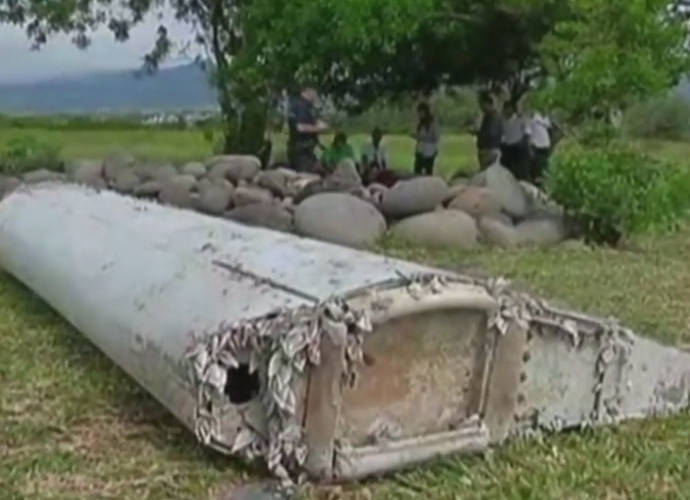Malaysia Airlines Flight 370 Update: No Pilot Was In Control When It Crashed
New information has come to light that lead investigators to believe that no one was in control of the infamous Malaysia Airlines flight MH370 that crashed into the Indian Ocean in March 2014.
UNDEPLOYED FLAPERON FROM FLIGHT MH370
While the plane has never been found and the exact coordinates of it’s crash are still unknown, many pieces of debris have been found that help investigators piece together the puzzle. Over 20 parts have been found in the two years since the crash, but only three have been confirmed to belong to MH370, and just four others are probable.
One of the three confirmed pieces was found just this past June, washed onto the shores of Tanzania on the east coast of Africa. The debris was from the wing and was called a flaperon. When a plane lands, the pilot deploys the flaperon, which is a long curved metal flap that BLANKS downward from the wing. This reduces windspeed, and can slow down a landing plane.
The big piece of evidence that was uncovered here is that the flaperon was never deployed on the 777. This indicates that either the pilot was incapacitated at the time of the crash and was unable to deploy the flaperon, or that the pilot did not intend to make the forced water landing survivable.
“The really important news in this report is that the flap found in Tanzania was stowed,” said aviation expert Geoffrey Thomas, referring to the flaperon. “Therefore there was no way this airplane was being flown by anyone. It was out of control, ran out of fuel and spiraled into the sea at high speed.”
CNN aviation analyst Mary Schiavo agrees with this conclusion, and has speculated how this could come to be. Her two early theories are that either there was a fire on board the plane and smoke and fumes incapacitated everyone on board, or that rapid decompression from perhaps a window breach caused all passengers to perish before the plane ran out of fuel and descended, uncontrolled. “The wreckage showed that what you would have extended – the landing flaps – were not extended in the final moments of the flight, so no one was planning to land the plane on water,” she confirmed.
There has been speculation that the pilot, Zaharie Ahmad Shah, caused the crash on purpose as part of a personal suicide mission. According to New York Magazine, the FBI was looking into Zaharie’s home-built flight simulator that showed simulated flights over the Indian Ocean that were created just weeks before the fatal crash. However, Malaysian Transport Minister Datuk Seri Liow Tiong did not think this was sufficient evidence, as it was just one of many simulated scenarios in the computer. “The simulator was used by the pilot for trial and error in many areas,” said the minister. “There are thousands of simulations to many destinations.”
Experts and investigators are holding meetings in Australia this week to discuss the future of the search for flight MH370. In the past two years, 110,000 square km have been covered in the underwater search (and a much wider surface search has taken place.) Currently, the plan is to stop all searches after reaching a 120,000 square km area. Everyone involved agrees that they are in the right place, with slight disagreements as to exactly where the plane may be. “Where they’re looking is still the area where everyone agrees that’s where the plane is,” said Thomas. “We’re only talking about small increments – just variations as to exactly, precisely where it could be.” Australian Transport Minister Darren Chester adds, “To have not found the aircraft at this stage is frustrating for everyone involved and particularly for the families of the passengers and crew,”
Authorities from Malaysia, China, Australia, the United States and the United Kingdom are discussing whether to extend the search, which has been mainly carried out by the Australian Transport Safety Bureau. “They are reviewing all the available data and associated analysis, assumptions and modeling undertaken to inform the definition of the search area,” says Dan O’Malley of the ATSB.
“It’s an opportunity to gather the experts from around the world to look at the available information, to exchange ideas,” Chester said of the meetings. “It’s an opportunity for just a full assessment of how the underwater search is being carried out and a reassessment.”
RELATED ARTICLES
Get the most-revealing celebrity conversations with the uInterview podcast!




 Click here for the Best Celebrity Bikinis Of Summer 2016 Photos Slideshow
Click here for the Best Celebrity Bikinis Of Summer 2016 Photos Slideshow



Leave a comment